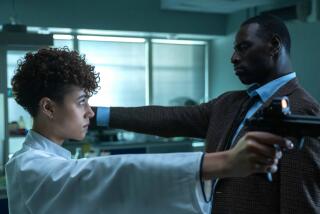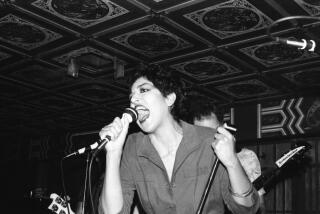Zap, Pop and Crunch
- Share via
Living in Hong Kong in the early 1990s, I found that action films were as commonplace and plentiful as chicken feet at dim sum. Back in America, however, they were known to and admired only by people whom I considered to be fanatics: a geeky subset of genre film buffs (my apologies to Quentin Tarantino). Jackie Chan had yet to release “Rumble in the Bronx” and was still gun-shy about any reentry into American cinemas after a dismal response to his films in the 1980s.
For Chow Yun-Fat, Jet Li and Tsui Hark, Hollywood was akin to the Emerald City, a distant dreamlike place. They spoke of it in hushed tones and wished John Woo well with his first endeavor there, a Jean-Claude Van Damme flick better left unnamed. But they were content for their old friend and colleague to be the guinea pig. And Woo knew that if he was going to make it in America he would have to do it without aerial wires and period costumes.
Cut to almost 10 years later. Mild-mannered Ang Lee, director of the most subtle and highbrow character-driven films “Eat Drink Man Woman,” “Sense and Sensibility” and “The Ice Storm,” collects an Oscar for “Crouching Tiger, Hidden Dragon.” Next, the spoof film, “Kung Pow! Enter the Fist,” an updated version of “What’s Up, Tiger Lily?,” is released, the penultimate symbol of a genre arriving in Hollywood.
Now, Hong Kong-style action movies are as American as baseball, apple pie and Chinese takeout. The crossover is complete; movies and technology have been appropriated, assimilated and reinvented American-style. (Just look at the choreography of Keanu Reeves’ fight scenes in “The Matrix.”)
By all rights then, “Hong Kong Comics: A History of Manhua” by Wendy Siuyi Wong will be a bestseller and end up both on the bedside tables of soccer moms and inside backpacks of Art Center students. The book is an encyclopedia of comics and the graphic art form called manhua, known as manga in Japanese.
Although manhua includes everything from political satire to children’s tales, it is best known for its wuxia or kung fu characters. This type of manhua was the natural springboard for Hong Kong action films. Think comic book superheroes: Spider-Man, Superman and Batman. The influence, though, went both ways. A comic book based on Bruce Lee called “Lee Siu-lung” (his Chinese name) was extremely popular, as was “Black Batman,” which was based on its American counterpart and used its villains and story lines.
“Hong Kong Comics” catalogs the popular and populist form from its beginnings at the turn of the 20th century to its present incarnation. Always, manhua was used for creative storytelling as a way to reach the broadest audience possible.
The book is divided into four parts: satirical and political manhua, comical manhua, action manhua and children’s manhua. There are more than 1,000 illustrations with extraordinarily detailed captions and comprehensive appendices, making it the bible on the subject. It is a compelling work that is extremely tactile, demanding to be caressed, perused and studied. Artists will find “new” images to “borrow” and incorporate into their own work. As a result, just like the art form itself, the book appeals to readers of all levels.
It is easy to see why “Hong Kong Comics,” which was originally published in Hong Kong in Chinese, appealed to an American press and is now published in English. Ten years ago, it might have been a leap of faith. Today, it is assured a proper audience and reception.
More to Read
Sign up for our Book Club newsletter
Get the latest news, events and more from the Los Angeles Times Book Club, and help us get L.A. reading and talking.
You may occasionally receive promotional content from the Los Angeles Times.










